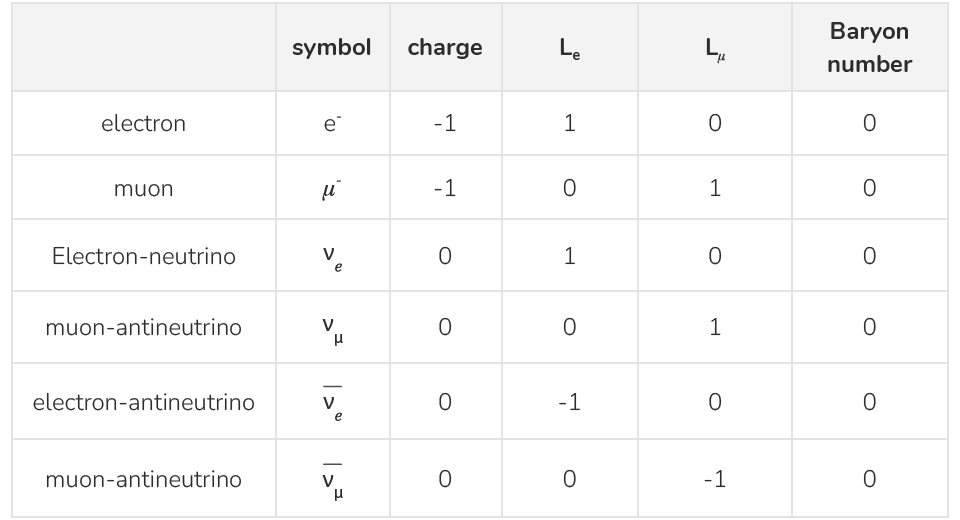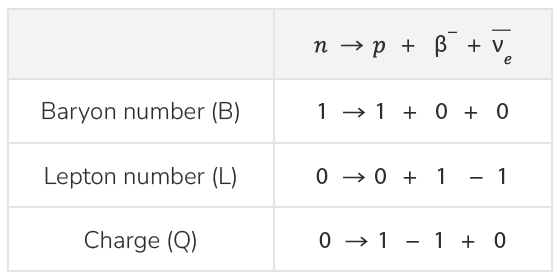Hadrons & Leptons
This lesson covers:
- The two groups of hadrons - baryons and mesons
- What leptons are and their classification
- Important conservation laws in particle interactions
Hadrons
Hadrons are particles that feel the strong nuclear force.
Hadrons are not fundamental. This means they can be broken down into smaller particles called quarks.
There are two categories of Hadron:
- Baryons - e.g. protons and neutrons
- Mesons - e.g pions and kaons
Other properties:
- Proton are the only stable baryon, others decay.
- Mesons are unstable and decay into other particles.
Baryon number
Particles which are baryons have a baryon number of +1.
Anti-baryons such as the antiproton have a baryon number of -1.
Particles which are not baryons or anti-baryons, have a baryon number of 0.
The baryon number, representing total baryons, must be conserved in interactions.
| Description | Baryon number | |
|---|---|---|
| Proton | Baryon | 1 |
| Neutron | Baryon | 1 |
| Antiproton | Antibaryon | -1 |
| Antineutron | Antibaryon | -1 |
| Electron | Lepton | 0 |
Leptons
Leptons are fundamental particles, meaning they cannot be broken down into smaller components.
Leptons do NOT feel strong force.
Types include:
- Electrons
- Muons
- Neutrinos
Each has a corresponding antiparticle.
There are separate lepton numbers for muon type and electron type leptons which must be conserved.
The table below summarises the symbol, charge and lepton numbers for each particle.
All leptons have a Baryon number of 0

Neutron decay
In neutron decay a neutron decays into a proton, electron and an electron-antineutrino
n→p+β−+νˉe
The table below shows how Baryon number, Lepton number and charge are all conserved in the decay.

Obeying conservation laws allows us to model real particle interactions and develop fundamental theories.